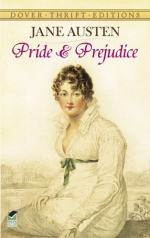|
This section contains 2,428 words (approx. 9 pages at 300 words per page) |

|
SOURCE: Litz, A. Walton. “The Picturesque in Pride and Prejudice.” Persuasion, no. 1 (16 December 1979): 13, 15-24.
In the following essay, Litz discusses Austen's use of landscape in Pride and Prejudice, focusing on how she employs “picturesque moments” to establish meaning and form.
When I learned that Donald Greene would be talking this evening about possible models for Pemberley, it set me thinking again about the role of landscape—both natural and “improved”—in Jane Austen's fiction. Over the past few years, following the early lead of E. M. Forster, a number of critics have examined Jane Austen's uses of landscape, and have discovered that she was affected far more profoundly than one might have thought—given her essentially classical mind—by the great shifts in taste and feeling that we call Romanticism. In the later novels landscape is used to express “states of feeling,” and in Persuasion especially the intensely...
|
This section contains 2,428 words (approx. 9 pages at 300 words per page) |

|


